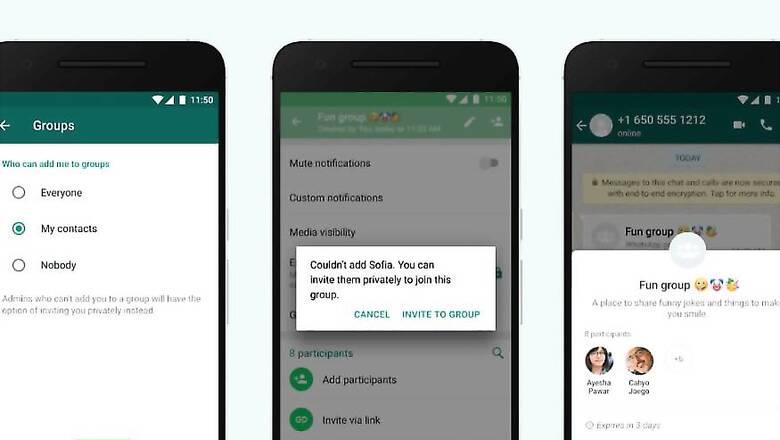
views
Arguably the world’s most popular instant messaging app, the Facebook-owned WhatsApp now has new tools for Groups on the platform. Specifically, you can now control who can add you to a WhatsApp Group. This means that no one, including those who may not be saved as a contact in your phone, can now add you to a WhatsApp Group without your explicit consent.
To enable the new Group settings, you need to go to the Settings menu in WhatsApp. Here, select Account -> Privacy -> Groups and select one of three options: Nobody, My Contacts, or Everyone. If you select Nobody, you will have to approve the invitation for every group invite. If you select My Contacts, other WhatsApp users who are already saved as contacts in your address book can add you to groups without you having to give specific permissions.
All this while, anyone was able to add any WhatsApp user to a WhatsApp Group, without the person who is being added having any say in the matter. Though you could always choose to exit a group later, it was simply an annoyance.
WhatsApp says this new feature is rolling out to users globally starting today. However, this is a phased rollout and not everyone will see these new settings right away. According to research firm Statista, WhatsApp had clocked 1.5 billion active users globally by the end of January.
This could be just another step in curbing the spread of fake news and misinformation on WhatsApp, something the instant messaging platform has been criticized for in many countries. This gains even more significance ahead of the 2019 Lok Sabha elections in India. The government has been pressurizing the social network to implement steps to curb the spread of fake news. One measure that WhatsApp has already implemented is the limit to how many times a user can forward a particular message on the platform. It is believed that WhatsApp is also testing a feature that will show how many times a particular message has been forward, making a sort of trail that could give a better indication of where the chain started—this could be useful in identifying the source of a potentially incorrect information being spread on the platform.


















Comments
0 comment